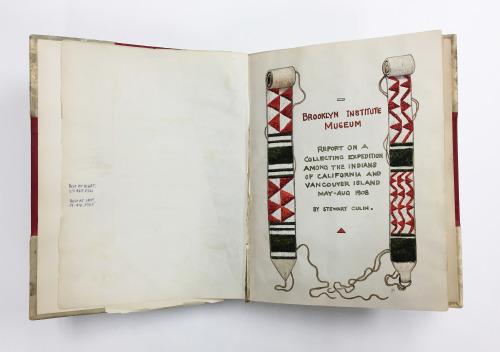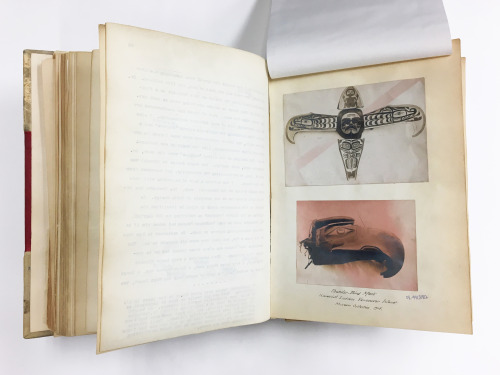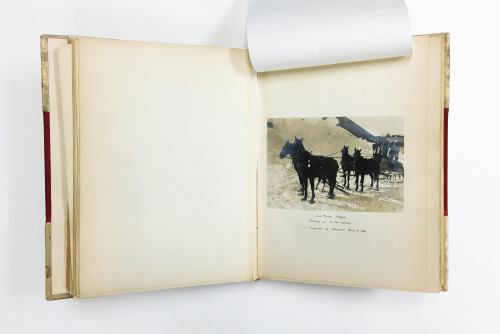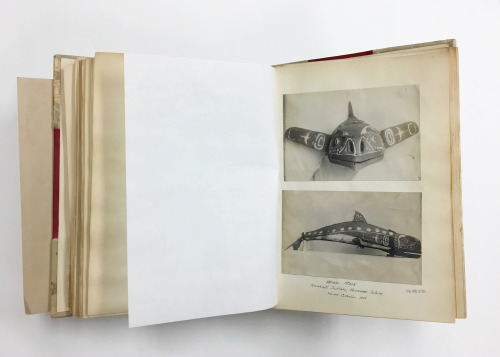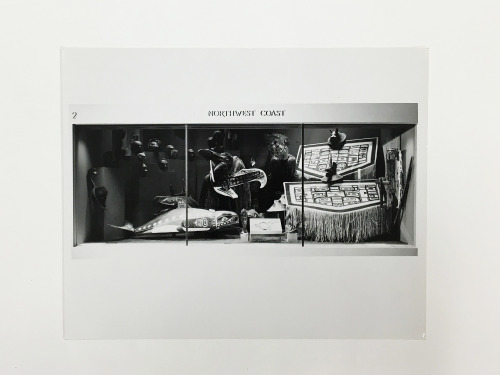While walking through the Disguise exhibition, I started thinking about some of the other masks in t
While walking through the Disguise exhibition, I started thinking about some of the other masks in the Museum’s collection. I’m particularly drawn to the Kwakwaka'wakw Baleen Whale Mask featured in Connecting Cultures, collected by Stewart Culin in 1908 from the Pacific Northwest. Not only is this mask beautiful, it is also very large and was worn along a dancer’s back while the dancer manipulated cords to move the flippers, tail, and jaw. Another favorite, the Kwakwaka'wakw Thunderbird Transformation Mask, created by the Namgis clan was traditionally worn on the forehead with the dancer’s face covered or showing to indicate the duality of man and bird. The dancer could open and close the mask with cord riggings to create a spectacular effect. I think I’m partial to these objects because their provenance is so well documented in the Museum Archives.The Museum asked Culin to start documenting his collecting expeditions, so he began collecting things like photographs, restaurant menus, correspondence and invitations, and wrote detailed notes regarding his travels. His assistant compiled all the information in bound expedition reports and each report’s title page was illustrated by Museum Artist, Herbert B. Tschudy, who often accompanied Culin on collecting trips. The stories that unfold when the records housed in the Archives connect us to the Museum’s object collection are endlessly fascinating and educational. During the spring and summer of 1908, Culin traveled to “California and Vancouver Island” to collect objects that documented the cultures of the native peoples there. The 1908 diary-style expedition report is filled with photographs and postcards documenting his travels. The two Kwakwaka'wakw masks were purchased from “Dr. Newcombe” on July 13th in Victoria, British Columbia, Canada. “Dr. Newcombe” showed Culin his recent acquisitions of books, reproductions of old Spanish maps, and some “ethnological material.” Culin noted, “He took me back, upon my inquiring, to a loft in a wooden building in the rear of his house, and there showed me two large wooden masks, a carved chest, some masks from the West Coast, and several other objects desirable for our collection.”The Library also has a related source on moving masks of the Pacific Northwest, Movable masks and figures of the North Pacific coast Indian, which features 18th colored serigraph plates of illustrations depicting specimens collected from the Kwakiutl, Tsimshian, Haida and Bella Coola tribes. Two images in particular resemble the Kwakwaka'wakw masks collected by Culin in 1908. For more resources on masks of the Pacific Northwest and other cultures, take a look at the Library’s online catalog.Posted by Jennifer NealPhotos by Brooke Baldeschwiler -- source link
#bkmlibrary#disguisebkm#masks#pacific northwest#kwakwaka'wakw#native americans#kwakiutl#tsimshian#haida#bella coola#tribes#mask#dance#seriograph#screenprint#illustration#books#rare#special collections#archives#baleen#whale#thunderbird#bird#highlight
